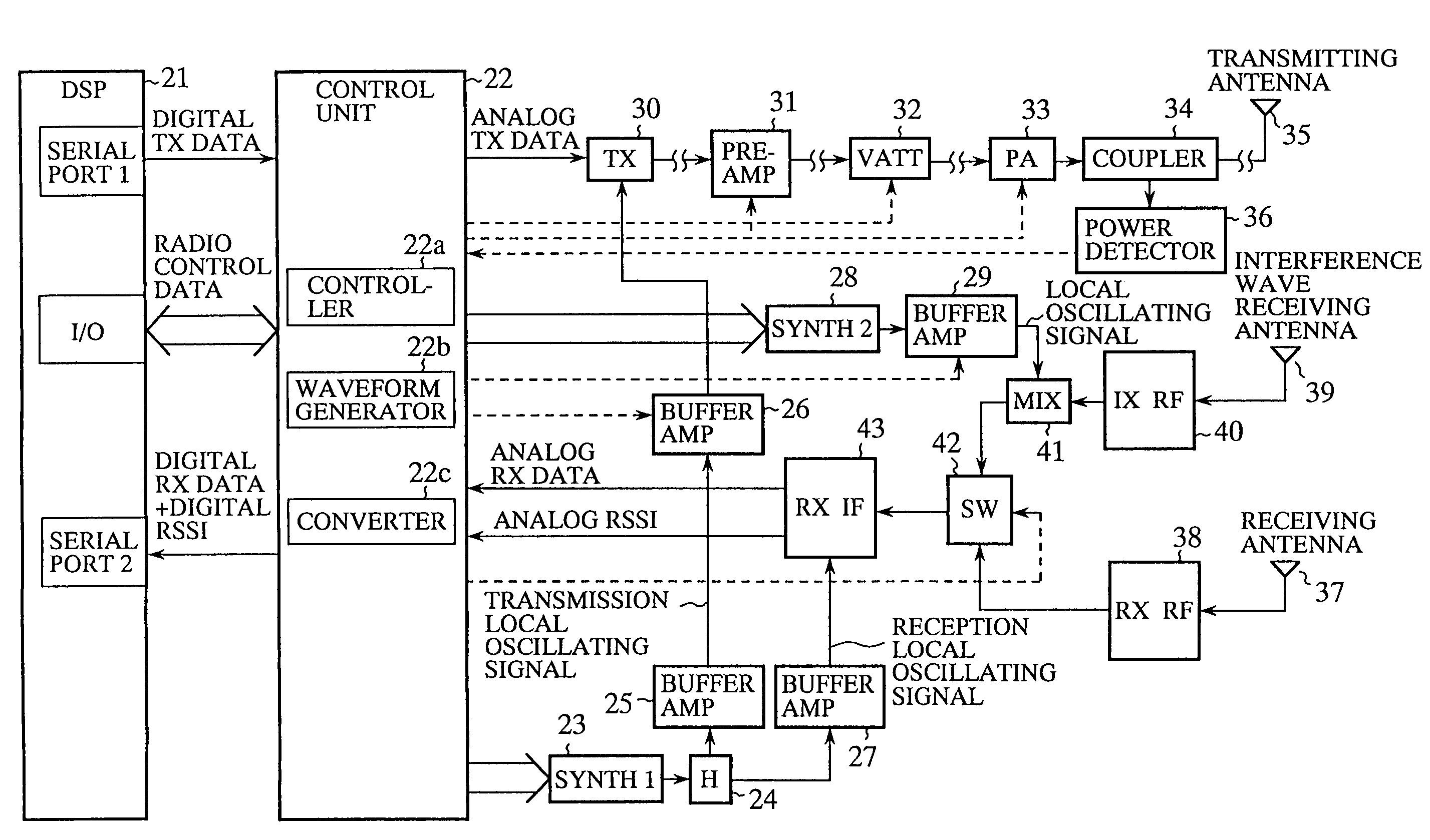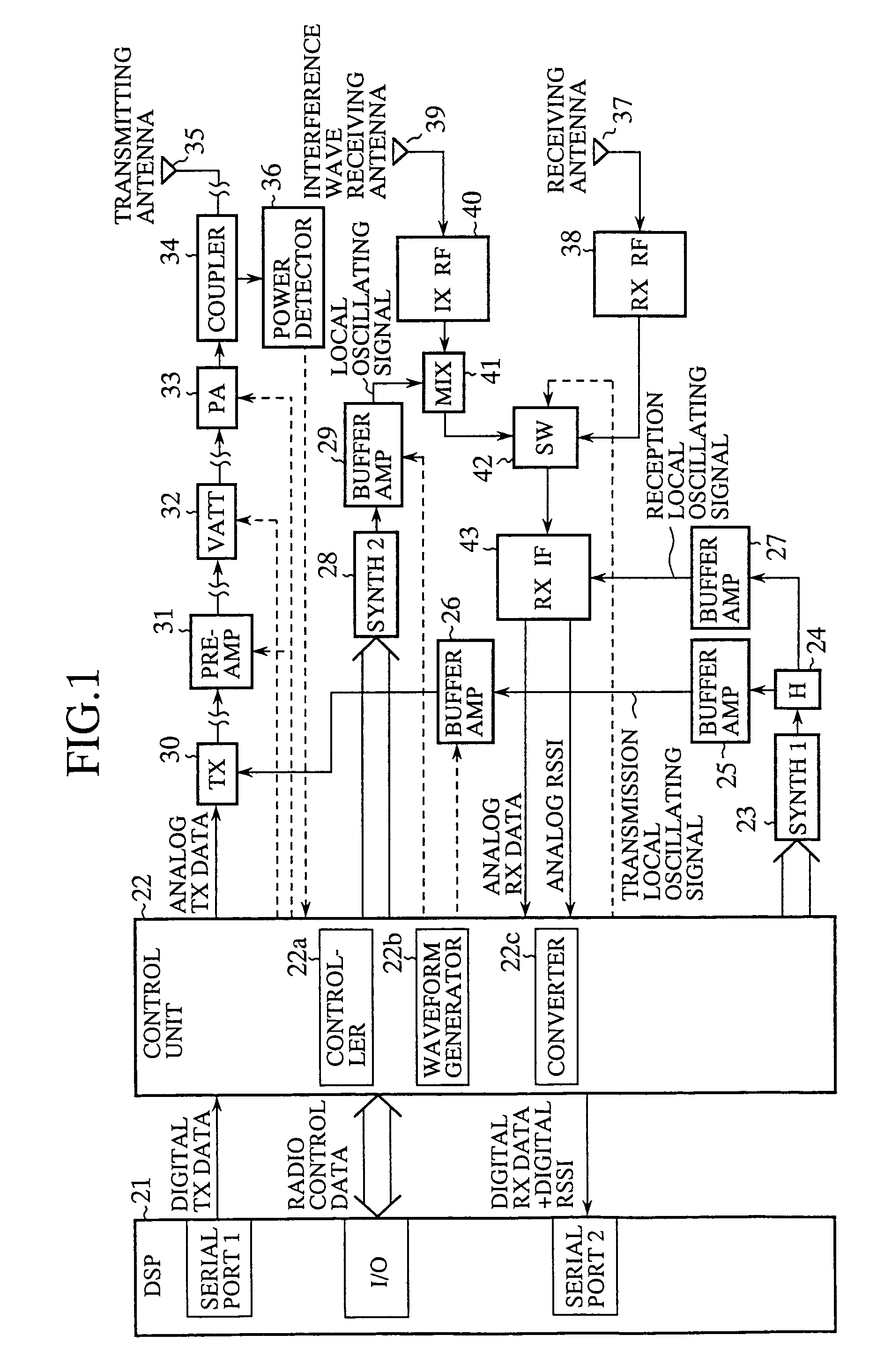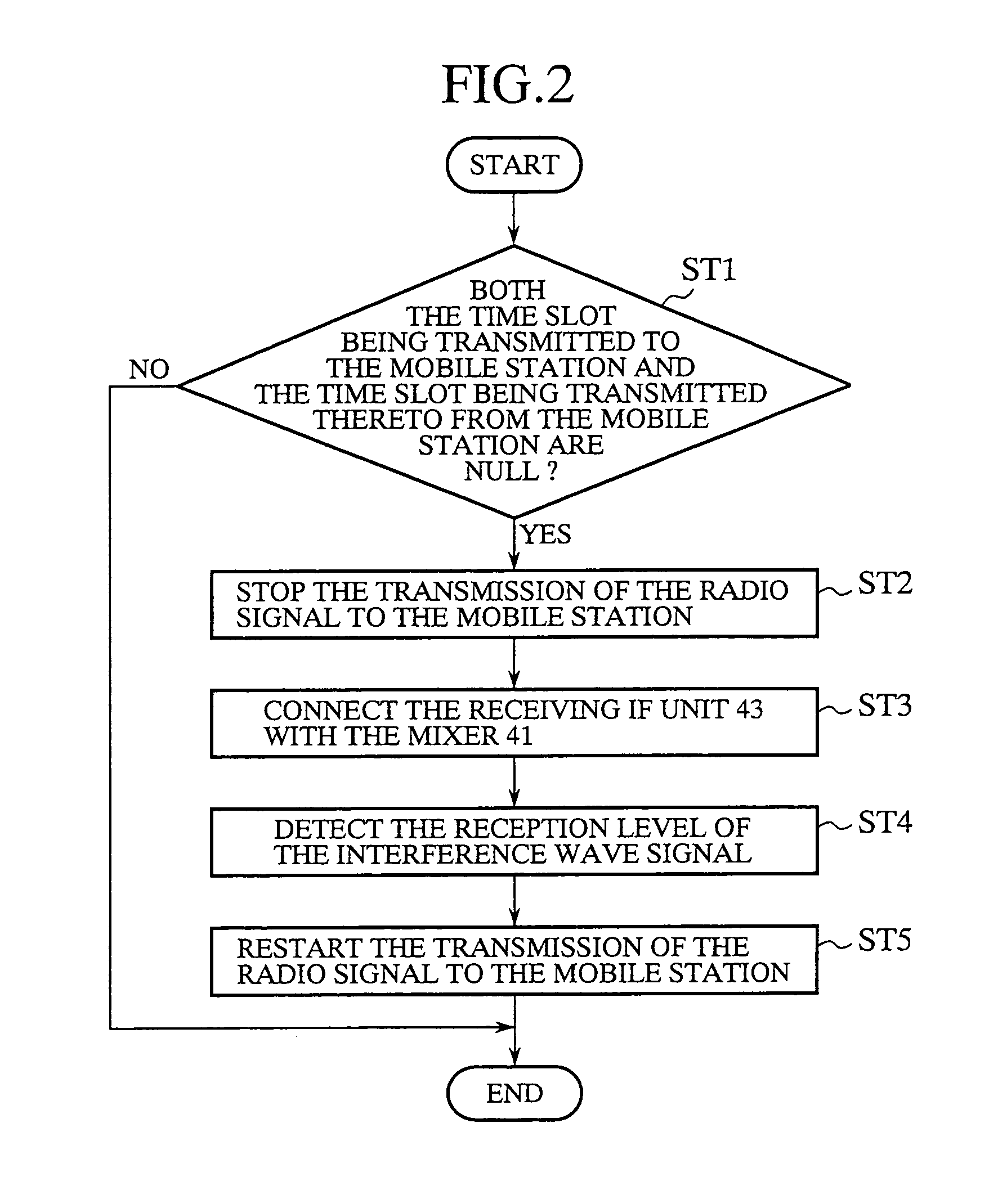Device for and method of detecting interference waves
a technology of interference waves and devices, applied in the direction of transmission monitoring, network planning, electrical equipment, etc., can solve the problems of reducing line quality, improving the line quality of the upward line, and not being able to improve the line quality of the downward line from the base station to the mobile station, so as to improve the line quality of the downward line
- Summary
- Abstract
- Description
- Claims
- Application Information
AI Technical Summary
Benefits of technology
Problems solved by technology
Method used
Image
Examples
first embodiment
[0046]Referring next to FIG. 1, there is illustrated a block diagram showing the structure of an interference wave detecting device according to a first embodiment of the present invention, which can be disposed at a base station using TDMA. In the figure, reference numeral 21 denotes a digital signal processor or DSP disposed within the base station, and 22 denotes a control unit for converting digital data to be transmitted from the DSP 21 into an equivalent analog signal to be transmitted, for converting a received analog signal and a reception level analog signal, which have been furnished by a receiving IF unit 43, into equivalent received digital data and equivalent reception level digital data, respectively, and for controlling a preamplifier 31, a switch 42, and so on. The control unit 22 is provided with a controller 22a, a waveform generator 22b, and a converter 22c including both an A / D converter and a D / A converter.
[0047]Further, reference numeral 23 denotes a first synt...
second embodiment
[0117]Referring next to FIG. 7, there is illustrated a block diagram showing the structure of an interference wave detecting device according to a second embodiment of the present invention. In the figure, the same reference numerals as shown in FIG. 1 designate the same elements as of the first embodiment mentioned above, and therefore the description of those elements will be hereinafter omitted. Reference numeral 44 denotes a third synthesizer for generating a second receiving 1st local oscillating signal having a frequency f2 which is different from the frequency f1 of a first receiving 1st local oscillating signal generated by a first synthesizer 23, 45 denotes a buffer amplifier for amplifying the second receiving 1st local oscillating signal from the third synthesizer 44, and 46 denotes a switch for connecting either a buffer amplifier 27 or the buffer amplifier 45 with a receiving IF unit 43.
[0118]When detecting an interference wave signal either having a frequency different...
third embodiment
[0122]In either of the first and second embodiments mentioned above of the present invention, the interference wave detecting device is so constructed as to detect the reception level of an interference wave signal received. In contrast, in accordance with a third embodiment of the present invention, there is provided an interference wave detecting device capable of transmitting a radio signal including test data by way of a transmitting antenna 35, receiving the radio signal including the test data by way of an interference wave receiving antenna 39, and comparing the test data included in the radio signal sent out with test data extracted from the received radio signal by mean of a DSP 21.
[0123]In other words, after the interference wave detecting device of the third embodiment furnishes and then receives a radio signal including arbitrary test data, it can make sure the correct transmission and reception functioning of the base station if it recognizes the agreement between the t...
PUM
 Login to View More
Login to View More Abstract
Description
Claims
Application Information
 Login to View More
Login to View More - R&D
- Intellectual Property
- Life Sciences
- Materials
- Tech Scout
- Unparalleled Data Quality
- Higher Quality Content
- 60% Fewer Hallucinations
Browse by: Latest US Patents, China's latest patents, Technical Efficacy Thesaurus, Application Domain, Technology Topic, Popular Technical Reports.
© 2025 PatSnap. All rights reserved.Legal|Privacy policy|Modern Slavery Act Transparency Statement|Sitemap|About US| Contact US: help@patsnap.com



